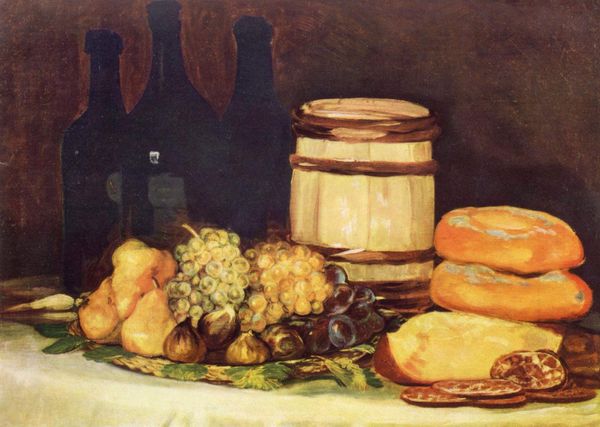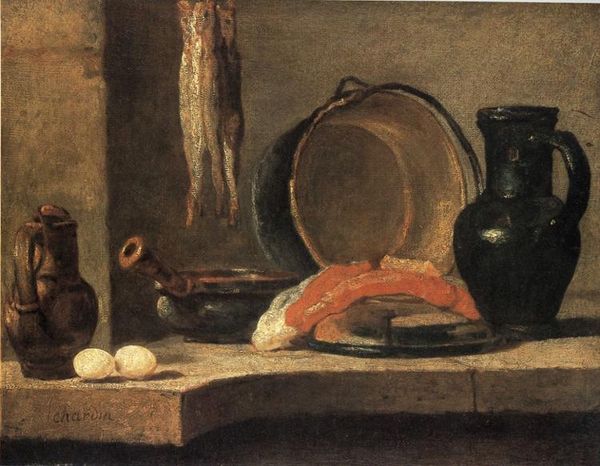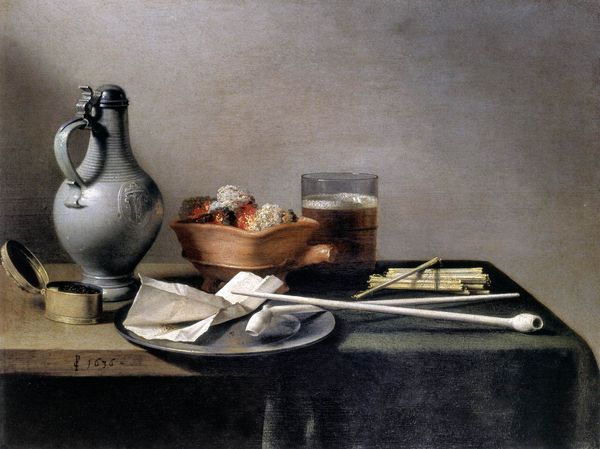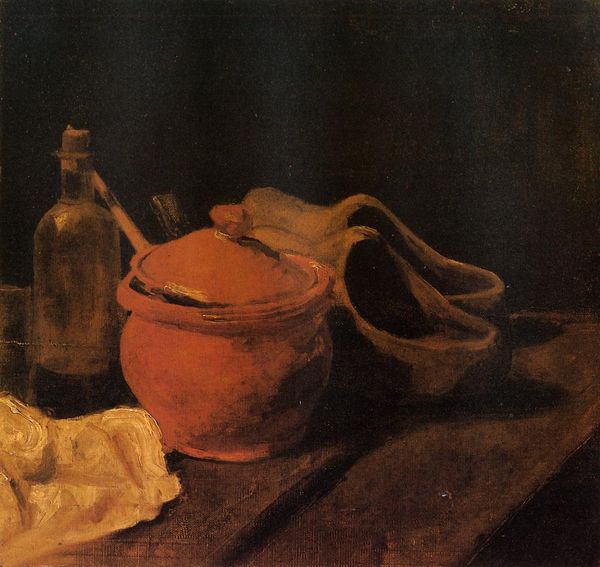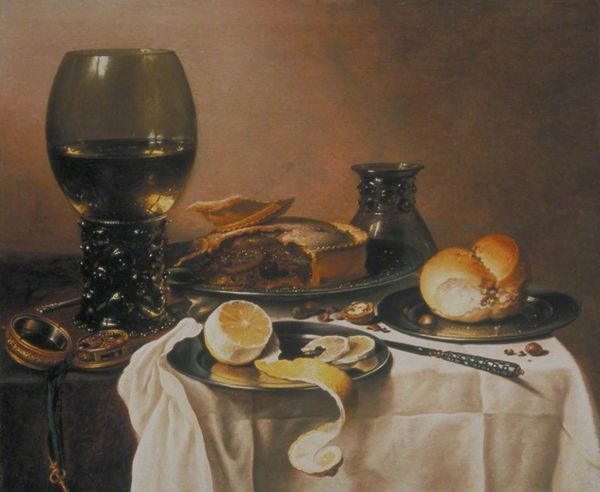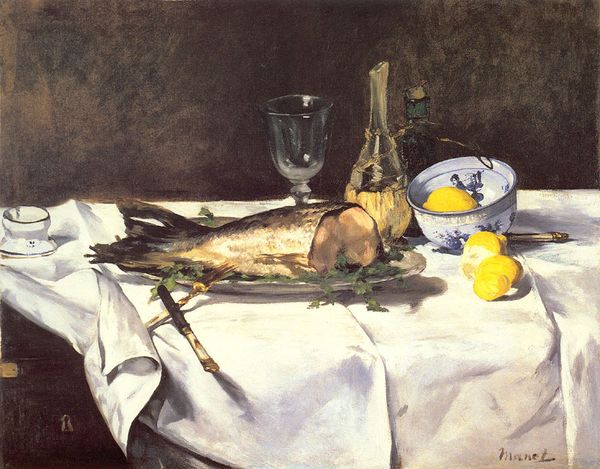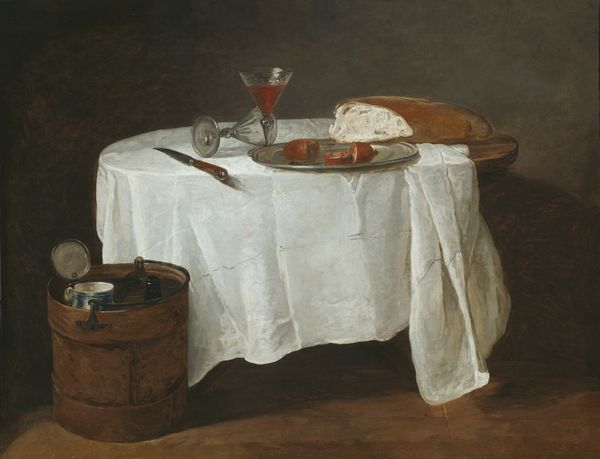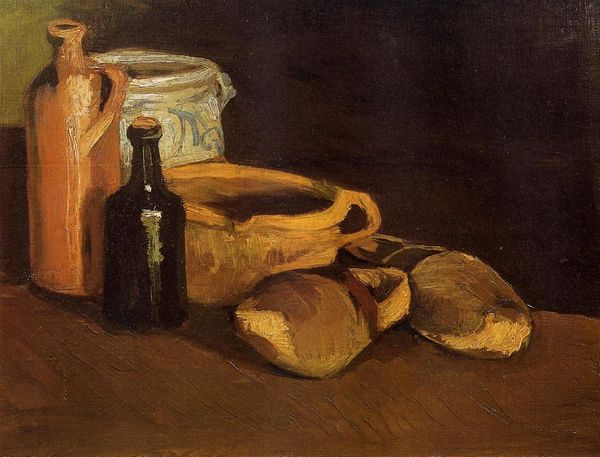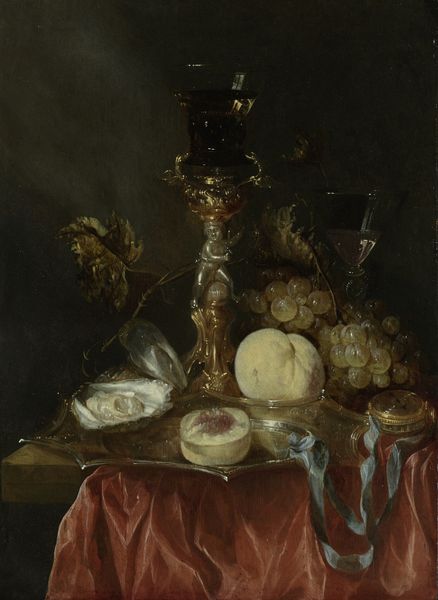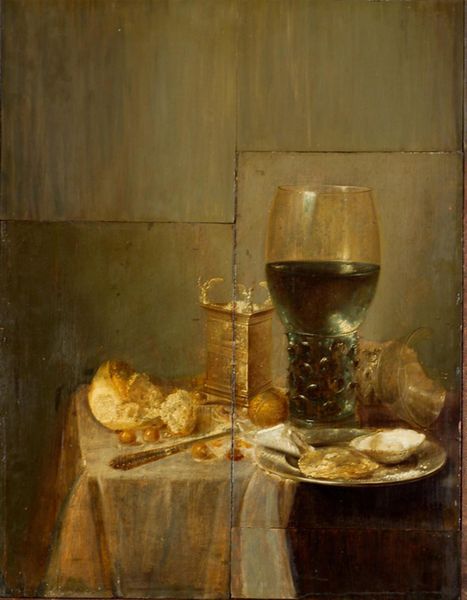
Dimensions: 59 x 76 cm
Copyright: Public domain
Editor: This is "Still Life with Bread and Eggs" by Paul Cézanne, painted around 1865. It’s an oil painting, and you can really see the texture of the brushstrokes. It’s quite dark, somber almost. What catches your eye when you look at this? Curator: I’m immediately drawn to the physicality of the paint itself. Notice how Cézanne builds up the surface with thick impasto, especially on the bread and the white cloth. It’s not just representation; it’s about the labor of applying paint, the material reality of the canvas becoming an object in itself. Editor: So, you’re focusing on the process rather than just what's being depicted? Curator: Precisely. Think about the social context. This was a time of industrial revolution, mass production. Cézanne is, in a way, asserting the value of handmade, slow, deliberate creation against that backdrop. Each brushstroke is a conscious act, a resistance to the dematerialization of labor. Editor: I never thought about it like that. The impasto makes so much sense now. Curator: Consider the starkness of the composition too. The dark background, the simple arrangement. It avoids the seductive illusionism of academic painting, emphasizing the basic materials – bread, eggs, glass, cloth. These were staples, everyday objects, made monumental through the act of painting. Are we celebrating basic means of life? What do you think the starkness adds? Editor: It definitely grounds the painting, makes it about the everyday. Maybe Cézanne is showing that there’s beauty and value even in the simplest things, if you really look. I see how it comments on both labor and the process of its production. Thanks, I really learned something! Curator: And I think analyzing the painting like this has furthered my insights into Cézanne’s unique view of materialism as he sought to translate lived experiences to material expressions.
Comments
No comments
Be the first to comment and join the conversation on the ultimate creative platform.

